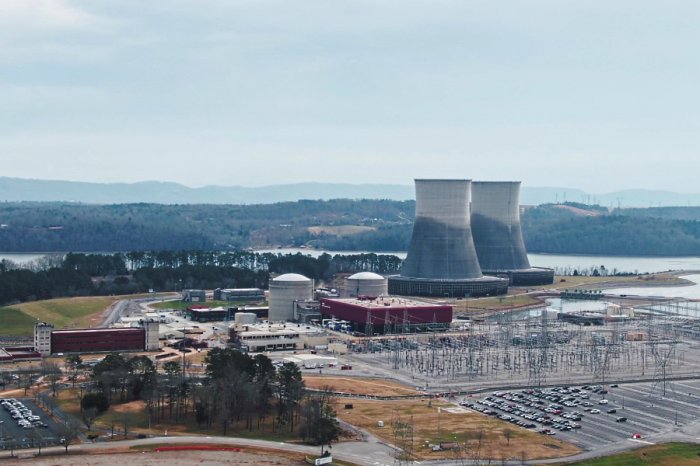After receiving the necessary documents and project presentation, our team will try to review your request as soon as possible, and leading experts will offer the best options for project funding.
The positive impacts of modernization ripple across industries, economies, and ecosystems.
From enhanced operational efficiency that meets the demands of a rapidly changing global economy to the reinforcement of safety standards that prioritize human lives and environmental stewardship, the benefits are far-reaching. As project stakeholders, from investors to local communities, rally around the cause of modernization, we collectively contribute to a progress.
GCAM Investment Group offers a wide range of financial tools and capital sources for regasification terminal modernization projects around the world.
The role of LNG regasification terminals in the energy sector
Liquefied natural gas regasification terminals play a crucial role in global energy industry by facilitating the conversion of liquefied gas back into its gaseous form.This process is essential for transporting natural gas efficiently over long distances, as LNG takes up significantly less volume than its gaseous state, allowing for easier storage, transportation, and energy access. Against the backdrop of growing competition, the issue of modernization, technical renewal and increasing the operational efficiency of LNG terminals is becoming increasingly urgent.
LNG transportation is important for economic growth
LNG transportation is a critical component of the energy terrain, addressing the challenge of transporting natural gas over vast distances. Large-scale liquefaction process enables countries to access natural gas from diverse sources worldwide, fostering energy security and supply diversity.In 2022, the global LNG trade volume reached a historic high, averaging 51 billion cubic feet per day, which is a 5% increase compared to the previous year. The substantial growth in global LNG trade is attributed to the expansion of liquefaction capacities, primarily in the USA. Concurrently, the rising demand for LNG in European Union has also contributed to the surge in trade, as LNG continues to displace pipeline imports from traditional suppliers.
Smooth LNG transportation supports the development of a global natural gas market, allowing nations to benefit from each other's resources and contributing to economic growth. Additionally, it facilitates the establishment of LNG regasification terminals in regions lacking local gas reserves, ensuring a reliable and flexible energy supply. The versatility of transportation plays a key role in meeting the increasing demand for cleaner energy sources and reducing dependence on coal and oil.
Regasification process and infrastructure components
The regasification process is integral to LNG terminals, facilitating the conversion of liquefied natural gas back into its gaseous form for distribution and consumption. This process involves controlled warming, typically through heat exchangers, where LNG is heated to ambient temperatures, causing it to revert to natural gas.Advanced infrastructure components play a crucial role in this process.
Large storage tanks are employed to store huge quantities of gas, ensuring a continuous and reliable supply. Regasification units, equipped with expensive sophisticated equipment, control the heating process and maintain optimal conditions for the safe conversion of LNG to ready-to-consume natural gas. Additionally, technically complex and expensive pipelines connect the regasification terminal to the broader natural gas distribution network, enabling the transportation of the regasified gas to end-users.
A well-designed and highly-efficient infrastructure, comprising storage tanks, regasification units, and pipelines, ensures the seamless and reliable operation of LNG terminals. This process is vital for meeting energy demands in regions where natural gas is transported in its liquefied state, contributing to global energy security and flexibility.
Drivers of the need for LNG terminal modernization
The effectiveness of LNG terminals is evident in their capacity to efficiently convert liquefied natural gas into its gaseous form, providing a dependable and adaptable energy source.These facilities play a crucial role in meeting the increasing demand for natural gas across industries, power generation, commercial and residential sectors.
Environmental considerations are paramount in the development of LNG regasification terminals. While natural gas is recognized as a cleaner alternative, the regasification process and associated infrastructure can have environmental impacts. Hence, there is a pressing need for modernization to address these concerns. Advanced technologies, such as vapor recovery units and energy-efficient equipment, can significantly reduce emissions, aligning the terminals with sustainability objectives.
The imperative for modernization arises from various factors:
• Firstly, modernization efforts seek to improve operational efficiency by integrating cutting-edge technologies, ultimately reducing energy consumption and operational costs.
• Secondly, safety enhancements are a crucial aspect, ensuring that the terminals adhere to the highest safety standards, minimizing risks and complying with regulatory requirements.
• Thirdly, the adoption of modern technologies, like automation and artificial intelligence, allows for streamlined and optimized terminal operations, enhancing overall effectiveness.
Lastly, modernization ensures that LNG regasification terminals remain adaptable to market changes, enabling them to evolve in response to shifts in global energy demand, environmental regulations, and technological advancements. In summary, the convergence of effectiveness and environmental considerations underscores the pivotal role LNG regasification terminal modernization play in shaping a sustainable energy future.
Table: The main aspects underscoring the importance of modernization
| Key drivers | Brief description and explanation |
| Adaptation to evolving energy demands | LNG terminal modernization ensures that energy facilities remain adaptable and responsive to the dynamic shifts in energy demands. Upgrading technologies and processes is essential for aligning with emerging trends and requirements. |
| Improving energy efficiency | One of the primary goals of modernization is to enhance energy efficiency. Implementing advanced technologies and optimizing operational processes contribute to the conservation of resources, reduced energy waste, and overall improved efficiency in energy production and consumption. |
| Reducing environmental impact | Modernization initiatives prioritize eco-friendly practices to mitigate the environmental footprint of energy operations. By integrating cleaner technologies and sustainable practices, the industry can contribute to environmental conservation and address climate change concerns. |
| Enhancing safety standards | Safety is paramount in LNG facilities. Modernization involves the incorporation of innovative measures and protocols. This ensures a secure working environment for personnel, minimizes the risk of accidents, and safeguards surrounding communities. |
| Compliance with regulations | Evolving regulations demand adherence to higher standards in energy production and distribution. Modernization efforts are essential to comply with stringent environmental, safety, and operational regulations. |
Key components of LNG terminal modernization process
In essence, the modernization of LNG regasification terminals is a multifaceted initiative that not only addresses current operational challenges but also positions these facilities as sustainable and resilient players in the future of the energy industry.The modernization plan encompasses a holistic approach with the following important components aimed at transforming and optimizing the energy infrastructure.
Advanced technology integration
The infusion of cutting-edge technologies, such as Artificial Intelligence (AI), Internet of Things (IoT), and automation, revolutionizes how LNG terminals operate. AI algorithms can optimize energy consumption, IoT devices enhance monitoring and control, while automation streamlines processes, collectively leading to increased efficiency and reduced operational costs.Infrastructure upgrades
Upgrading the existing LNG infrastructure is critically important for staying competitive and ensuring a seamless operation.State-of-the-art storage tanks with advanced safety features not only increase capacity but also guarantee the integrity of LNG storage. Upgraded pipelines enhance the reliability and safety of transportation, and the implementation of cutting-edge regasification units ensures a more reliable and effective process.
Environmental considerations
In the modernization plan, environmental consciousness takes center stage. Adopting eco-friendly practices, such as waste heat recovery and water recycling, aligns LNG terminals with sustainable principles. Furthermore, by reducing the carbon footprint through cleaner energy solutions, like incorporating renewable energy sources and improving overall energy efficiency, these terminals contribute significantly to global environmental goals.Regulatory compliance and safety
Modernization isn't just about performance; it's also about compliance and safety.Upgrading LNG infrastructure ensures adherence to evolving regulations, promoting a culture of responsibility within the industry. Moreover, advanced safety measures integrated during modernization reduce the risk of accidents, ensuring the well-being of personnel and local communities.
Potential economic impact
The economic impact of regasification terminals modernization is huge. Beyond the initial investments, the improvements in operational efficiency, reliability, and safety contribute to long-term economic growth. Job creation, technological innovation, and increased competitiveness in the global LNG market are tangible outcomes of a well-executed modernization strategy.Modernisation planning and execution
Modernizing an LNG regasification terminal demands professional project planning and execution.This includes high-quality feasibility study, identifying and engaging with key project stakeholders, navigating regulatory requirements and ensuring compliance with environmental and safety standards, establishing a realistic timeline and well-defined milestones for project execution.

Feasibility Study
A comprehensive feasibility study lays the groundwork for a successful modernization project. It provides stakeholders with a clear understanding of the current state of the terminal, the potential benefits of modernization, and the associated risks. Armed with this knowledge, decision-makers can make informed choices that align with the economic and environmental goals of the project.Table: Feasibility study for LNG terminal modernization projects
| Main aspects | Brief description |
| Thorough analysis of the existing terminal | The feasibility study commences with a detailed examination of the current terminal infrastructure, technology, and operational processes. |
| Existing strengths and weaknesses are identified, providing a foundational understanding of what aspects need enhancement. | |
| Assessing economic feasibility | The economic viability of project is critically examined. This involves evaluating the costs of the project against potential financial benefits. |
| Considerations include investment requirements, revenue streams, and the anticipated return on investment over the project's lifecycle. | |
| Technical feasibility assessment | The technical feasibility aspect scrutinizes the compatibility of proposed modernization technologies with existing infrastructure. |
| Evaluations consider the feasibility of integrating new technologies, potential disruptions during the transition, and the overall impact on terminal operations. | |
| Environmental impact evaluation | A crucial component involves assessing the environmental feasibility of the modernization plan. |
| This includes evaluating the potential environmental impact of the proposed changes, ensuring alignment with current regulations, and exploring eco-friendly alternatives. | |
| Risk analysis | Identifying and analyzing potential risks associated with the modernization project is integral to the feasibility study. |
| This includes assessing all risks related to technology implementation, regulatory compliance, market dynamics, and any unforeseen challenges that may arise during the execution phase. |
Stakeholder engagement
Engaging stakeholders is integral to the success of the LNG terminal modernization project.By actively involving all relevant parties, addressing concerns, and garnering support, the project not only gains credibility but also ensures a more inclusive decision-making process. This approach contributes to long-term project sustainability and positive relationships with the communities and all the legal entities affected by the modernization efforts.
Table: Identifying and engaging with main project stakeholders
| Main aspects | Brief description |
| Stakeholder identification | Identifying all relevant stakeholders involved in or impacted by the LNG regasification terminal modernization project. |
| Stakeholders may include investors, government agencies, regulatory bodies, local communities, employees, and environmental groups. | |
| Stakeholder mapping | Creating a stakeholder map to visualize the most important relationships, interests, and influence levels of each stakeholder. |
| Prioritizing stakeholders based on their actual impact on the investment project and their level of influence. | |
| Opening clear communication channels | Establishing clear channels of communication with identified stakeholders. |
| Utilizing various mediums such as meetings, workshops, newsletters, and digital platforms to disseminate information and gather feedback. | |
| Proactive issue resolution | Addressing concerns promptly and proactively. Establishing effective mechanisms for receiving and resolving issues raised by stakeholders. |
| Demonstrating a commitment to addressing concerns fosters trust. | |
| Customized engagement strategies | Tailoring engagement strategies to the specific needs and expectations of different stakeholder groups. |
| Organizing trainings, public forums, or focus group discussions to gather insights and ensure inclusive decision-making. | |
| Building alliances | Identifying opportunities to build alliances with key stakeholders who can play a pivotal role in garnering broader support for the project. |
| Collaborating with local communities, environmental groups, and regulatory bodies to align the project with broader societal goals. |
Regulatory compliance
Adhering to regulatory requirements is crucial for the successful and lawful execution of any large modernization project.Compliance not only ensures that the project aligns with legal standards but also enhances its credibility and acceptance within the regulatory landscape. Additionally, meeting safety and environmental standards is crucial for the well-being of personnel, the surrounding community, and the overall sustainability of the LNG regasification terminal.
Table: Navigating regulatory requirements and ensuring compliance with safety standards
| Main aspects | Brief description |
| Regulatory landscape assessment | Conducting a comprehensive assessment of the regulatory framework governing LNG regasification terminals. |
| Identifying relevant local, regional, and international regulations that apply to the modernization project. | |
| Safety standards assessment | Evaluating the current safety standards applicable to LNG terminals. |
| Identifying areas where safety enhancements are necessary to comply with the latest industry standards and regulations. | |
| Environmental impact assessment | Conducting a comprehensive environmental impact assessment (EIA) to evaluate the potential effects of the modernization project. |
| Addressing identified concerns and proposing mitigation measures. | |
| Engagement with regulatory bodies | Establishing open lines of communication with regulatory bodies and authorities overseeing the energy sector. |
| Seeking clarification on existing regulations, and proactively engage in discussions regarding the proposed modernization plans. | |
| Developing and preparing project documentation | Preparing thorough documentation that outlines how the modernization project aligns with existing regulations and standards. |
| Clearly articulating the intended benefits and mitigations for potential challenges as per regulatory requirements. | |
| Integration of best practices | Integrating best practices for regulatory compliance, safety and environmental sustainability into the modernization plan. |
| This includes adopting technologies and practices that enhance safety measures and minimize the environmental footprint of the LNG project. | |
| Regular compliance audits | Establishing a system for regular compliance audits to ensure ongoing adherence to safety and environmental standards. |
| Periodic reviews help identify and address any significant deviations from established compliance project norms. |
Project timeline and milestones
A realistic timeline and well-defined milestones are crucial for project management success.They provide a detailed roadmap for project execution, aiding in the efficient allocation of resources and ensuring that the project stays on track. Milestones serve as tangible indicators of progress, allowing project team to assess achievements and address challenges promptly. Regular monitoring of the timeline against milestones enhances transparency, accountability, and the overall success of the LNG regasification terminal modernization project.
Table: Establishing a realistic timeline and milestones for project execution
| Main aspects | Brief description |
| Comprehensive project scope analysis | Conducting an analysis of the project scope, including all its aspects. |
| Identifying key tasks, dependencies, and potential challenges that may impact the modernization project timeline. | |
| Identification of key project milestones | Breaking down the project into key milestones that represent significant achievements or phases of the project. |
| Examples of milestones may include completion of feasibility studies, regulatory approvals, start of construction, technology integration, and final commissioning. | |
| Task sequencing and prioritization | Sequencing the most important tasks logically and prioritizing them based on critical dependencies and project objectives. |
| Considering the interplay between different elements of modernization, ensuring a streamlined workflow. | |
| Timeline alignment with milestones | Aligning the modernization project timeline with the identified milestones to track progress effectively. |
| Regularly assessing whether the project is on schedule, and adjust timelines if needed to meet milestones. | |
| Effective resource allocation | Allocating resources efficiently, taking into account manpower, materials, and equipment availability. |
| Ensuring that resources are distributed in a manner that supports the project's timeline. | |
| Contingency planning | Incorporating contingency plans for unexpected delays or challenges that may arise during the project. |
| Establishing buffers in the timeline to account for unforeseen circumstances without compromising project integrity. | |
| Communication and reporting | Establishing a robust communication plan to keep all stakeholders informed of project progress. |
| Regularly reporting on milestone achievements, upcoming tasks, and any adjustments to the project timeline. |
As we conclude our exploration of LNG regasification terminal modernization, we find ourselves at the intersection of innovation, sustainability, and progress. Business efforts to modernize these energy hubs are not merely a technological overhaul but a profound commitment to improve a future where efficiency, safety, and environmental consciousness harmonize seamlessly.
The future of energy sector is being shaped now, and you can contact the GCAM Investment Group team right now to make your project more financially accessible and flexible.






















